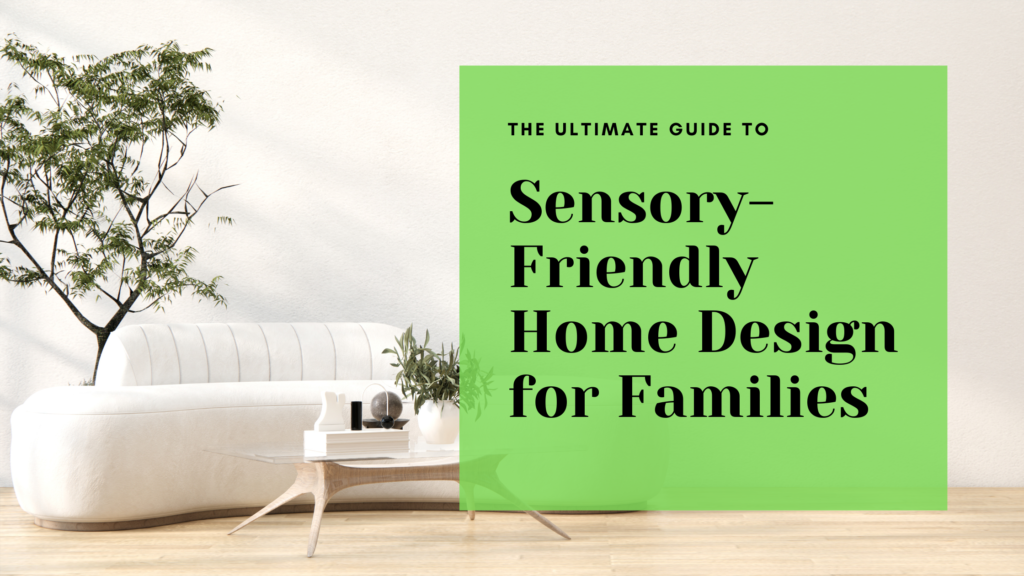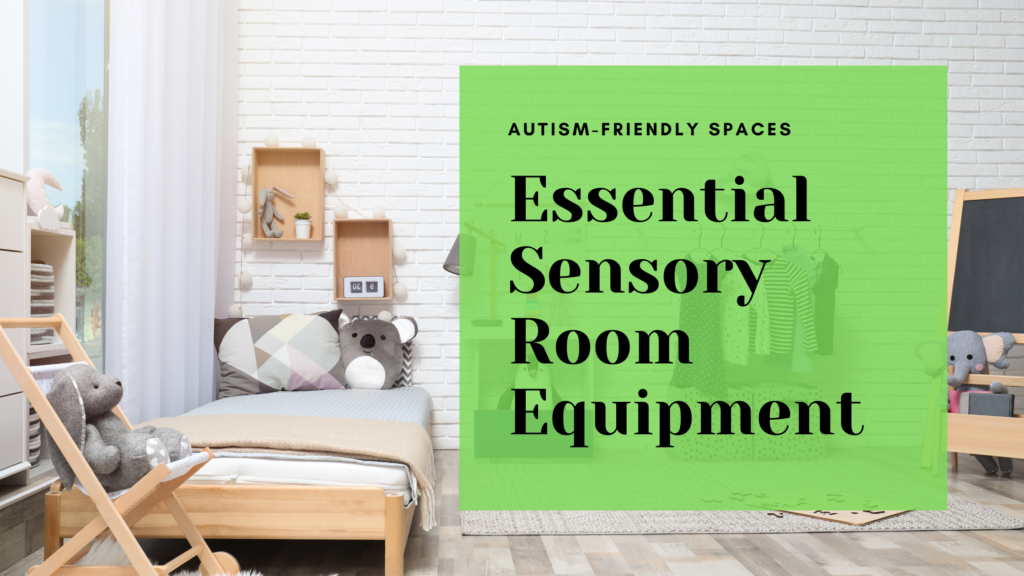I. Introduction
The Importance of Color in Sensory Room Design
Colors have a powerful impact on how we feel and behave. This is especially true for individuals with autism and sensory processing disorders. For them, color can either help create a soothing environment or lead to overstimulation, depending on the shades used. In sensory rooms, choosing the right colors plays a critical role in creating a calming and supportive atmosphere that promotes relaxation and well-being.
The right color scheme can transform a space into a calming refuge, where individuals feel safe, focused, and comfortable. For those with sensory sensitivities, the wrong color combinations can trigger anxiety or discomfort, while the right choices can have the opposite effect, creating an environment where they feel at peace.
Purpose of the Guide
This guide aims to provide families and caregivers with practical advice on selecting the best colors for a sensory room. We’ll explore which colors promote calm, enhance relaxation, and support sensory needs. By the end, you’ll have the knowledge to create a soothing sensory environment that meets the needs of those who benefit from these calming spaces.
II. Understanding the Psychology of Color
How Colors Affect Sensory Perception
Color psychology is the study of how different colors impact emotions and behavior. For example, warm colors like red and yellow tend to be more stimulating, while cool colors like blue and green are generally calming. These emotional responses are universal, but they can be amplified for individuals with sensory processing disorders, making it even more important to choose colors carefully when designing a sensory room.
For individuals with autism, colors can affect their sensory experience. Bright or harsh colors may overwhelm their senses, while softer, muted tones can help soothe and relax them. The impact of color on sensory perception varies by individual, which is why it’s essential to consider how specific colors will affect the room’s users before making design decisions.
Choosing Calming Colors for Sensory Rooms
When it comes to sensory rooms, calming colors should be the focus. Cool colors, such as soft blues and greens, have been found to reduce anxiety and promote a sense of calm. According to studies, blue is associated with feelings of peace and serenity, while green is linked to balance and relaxation . Soft pastel colors can also be effective in calming overstimulated individuals. These colors are gentle on the eyes and can help create a more peaceful environment for sensory regulation.
III. Best Color Choices for Different Sensory Room Needs
Colors for Relaxation and Calm
Blues and Greens
Shades of blue and green are known for their calming properties. Soft blues mimic the color of the sky and water, making them soothing to the mind and body. Green tones, similar to nature, bring a sense of tranquility and balance. For sensory rooms, light blues and greens are excellent choices for creating a serene and peaceful atmosphere. These colors help reduce stress and allow individuals to unwind in a comforting environment.
Soft Neutrals and Pastels
Neutral colors and pastels, such as beige, light gray, and pale pink, are ideal for promoting relaxation without overstimulating the senses. These colors act as a calming backdrop, especially when combined with soft lighting and cozy textures. By choosing neutral tones, you can create a sensory room that feels warm and inviting without overwhelming the user.
Colors to Encourage Focus and Attention
Subdued Warm Tones (Soft Yellows and Oranges)
While vibrant warm colors like red can be overstimulating, subdued shades of yellow and orange can help stimulate focus without causing sensory overload. Soft yellow is often associated with positivity and mental clarity, making it a good choice for activity zones in a sensory room. Similarly, soft orange can create an uplifting yet balanced atmosphere.
Accent Colors for Attention Zones
You can strategically use accent colors to define specific areas within a sensory room. For instance, a soft, warm accent color can help create a zone dedicated to activities that require focus, like reading or puzzles. These accent colors should be used sparingly to avoid overwhelming the senses, but they can be effective in drawing attention to key areas of the room.
Avoiding Overstimulation: Colors to Use with Caution
Bright and Bold Colors
Bright colors, such as red, neon shades, or bold primary colors, can be overwhelming for individuals with sensory processing disorders. These colors are highly stimulating and may increase anxiety or discomfort. In sensory rooms, it’s best to use these colors sparingly, if at all, as they can create an environment that feels chaotic rather than calming.
High-Contrast Combinations
High-contrast color combinations, such as black and white, can also be jarring for individuals with sensory sensitivities. These combinations can create a sense of visual tension, making it difficult for the room’s occupants to relax. If contrast is necessary, opt for more subtle differences in color intensity to avoid overstimulation.
IV. Practical Tips for Implementing Color in Your Sensory Room
Using Color in Wall Paint and Decor
When selecting paint colors for your sensory room, consider the room’s natural lighting. Test colors by applying samples on the walls and observing how the light changes throughout the day. Soft, muted colors tend to work best in sensory rooms as they create a soothing environment without being overwhelming.
In addition to wall paint, you can incorporate color through decor elements like curtains, rugs, and furniture. These elements should complement the overall color scheme of the room. For instance, neutral-colored walls can be paired with calming blue or green accents in rugs or cushions, reinforcing the room’s tranquil atmosphere.
Incorporating Color through Lighting
Lighting plays a significant role in how colors appear in a sensory room. You can enhance or change the mood of a room by using colored lighting, such as LED lights or lamps. For example, dimmable lights with soft blue or green hues can help create a calming environment, while adjustable lighting allows you to adapt the mood to the user’s needs throughout the day.
Creating Color Zones within the Room
Color zoning is a useful technique for defining different areas within a sensory room. For instance, use calming blues and greens in relaxation areas, while incorporating soft yellows or oranges in areas dedicated to focus and activities. This method helps to structure the room while keeping the overall environment peaceful and organized.
Combining Colors for Maximum Effect
When combining colors in a sensory room, aim for harmony. Use color theory principles to select complementary or analogous color schemes that work well together. For example, blue and green are analogous colors that naturally create a calming environment when used together. Combining these shades can help you design a room that feels cohesive and balanced.
V. Case Studies: Successful Sensory Room Color Schemes
Example 1: A Calming Blue-Themed Sensory Room
One sensory room was designed with a blue color scheme to create a calming atmosphere. Soft blue walls were paired with navy accents and dimmable blue lighting. The result was a space that felt peaceful and serene, helping users manage anxiety and focus on relaxation.
Example 2: A Green and Neutral Toned Sensory Room
In another example, a sensory room was designed using green and neutral tones to promote a sense of grounding and balance. The walls were painted a soft sage green, while the furniture and decor incorporated neutral beige tones. This color scheme created a warm and calming environment that felt natural and inviting.
Lessons Learned
These case studies demonstrate the importance of choosing the right color schemes for sensory rooms. Soft, calming colors like blue and green can have a significant impact on the room’s overall atmosphere. When combined with thoughtful lighting and decor, these colors help create a supportive environment for individuals with sensory sensitivities.
VI. Conclusion
Recap of Key Points
Choosing the right colors for a sensory room is essential for creating a calming and supportive environment. Cool colors like blue and green are particularly effective in promoting relaxation, while soft neutrals and pastels provide a gentle, soothing backdrop. Avoiding bright, bold colors helps prevent overstimulation, ensuring the room remains a peaceful space for those with sensory needs.
Encouragement to Experiment with Colors
Experimenting with different colors allows you to find the best combination for your specific sensory room needs. Don’t be afraid to test different shades and see how they affect the room’s atmosphere and the well-being of its occupants.
As you begin designing or redesigning your sensory room, take the time to explore various resources and consult with professionals who specialize in sensory-friendly environments. Share your experiences with others and continue learning to optimize your space for relaxation and comfort.


